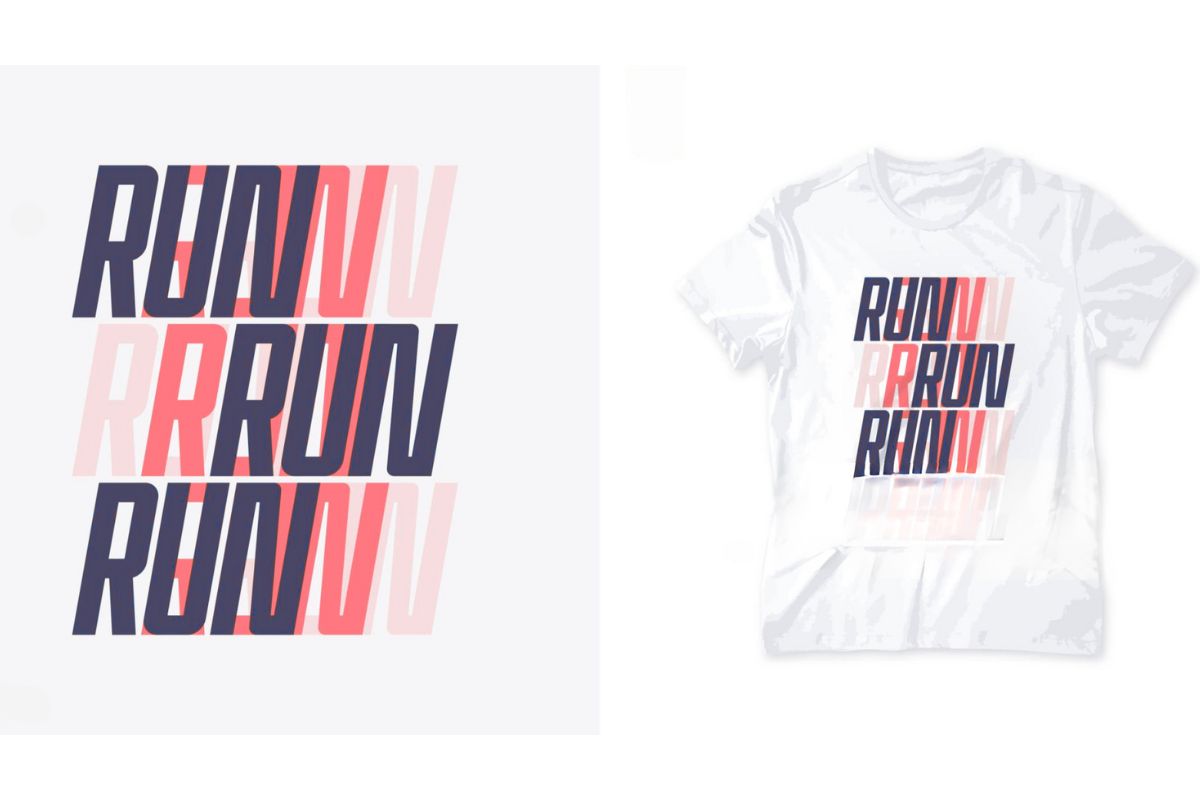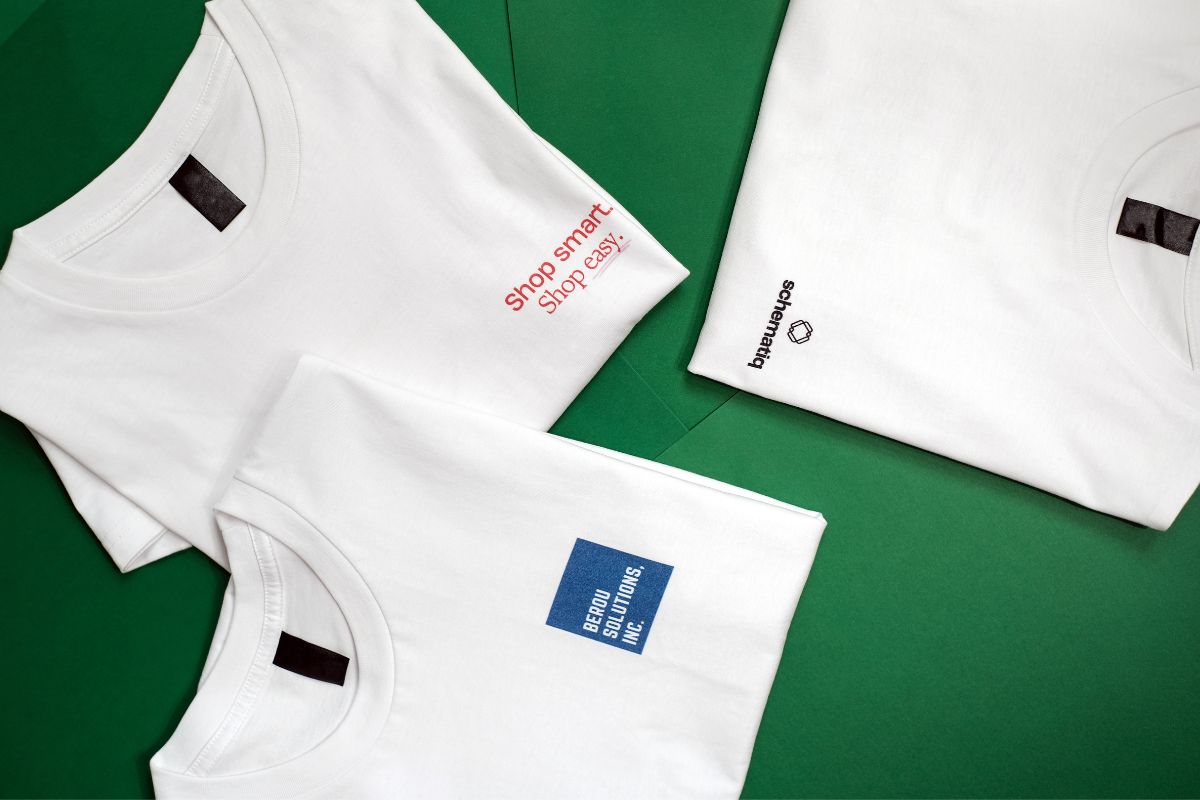Running shirts are more than functional apparel; they’re a canvas for expression. Whether you’re participating in a marathon or part of a running club, the design on your running t-shirt can convey your individual style, team identity, or the cause you’re supporting. With the evolution of custom apparel, you now have the power to personalize your running gear to reflect your personal taste or group branding.
The process has been simplified to cater to your creative whims. You no longer need to be a designer to craft a unique look for your running attire. Online platforms offer user-friendly interfaces where you can choose from a plethora of pre-made designs or create your own from scratch. High-quality printing and a variety of customizable options allow you the flexibility to design running shirts that stand out and speak volumes about your passion for running.
Elevating your running experience begins with the right choice of apparel. The integration of performance fabrics with your tailored designs ensures that your running shirts are not just visually pleasing but also enhance your running performance. Wicking fabrics to keep you dry, a comfortable fit for unrestricted movement, and vibrant, long-lasting prints ensure that your running shirt is both practical and inspiring, perfectly aligning with your running journey.
Foundations of Running Shirt Design
When designing running shirts, your choices in fabric and technology integration are crucial. They influence not only the comfort but also the functionality and overall performance of the apparel.
Understanding Apparel and Fabric Choices
When you select a fabric for running shirts, prioritize moisture-wicking materials. These fabrics draw perspiration away from the body, helping to keep you dry and regulate temperature. Common materials include:
- Polyester: Durable and lightweight, with excellent moisture-wicking properties.
- Nylon: Resistant to abrasion and mildew, with quick-drying capabilities.
- Polypropylene: Not only resists moisture but also is completely water-resistant.
Always consider the weight and weave of the fabric. Heavier materials might last longer, but lighter weaves offer better breathability.
The Role of Technology in Design
Innovations in technology have vastly expanded your capabilities in running shirt design. Here are some specific advancements:
- 3D Modeling: Allows you to visualize the shirt design in a comprehensive way before production.
- CAD Software: Utilize this to create precise designs and patterns, ensuring a consistent fit.
- High-Tech Printing: Methods like sublimation printing infuse dye into the fabric, ensuring the design doesn’t peel or fade.
Technology not only helps in creating aesthetically pleasing designs but also ensures that functional aspects like placement of reflective strips, ventilation zones, and support structures are accurately crafted.
Remember, your choice in fabric and the use of technology are pivotal in creating a functional and fashionable running shirt.
Crafting Your Design
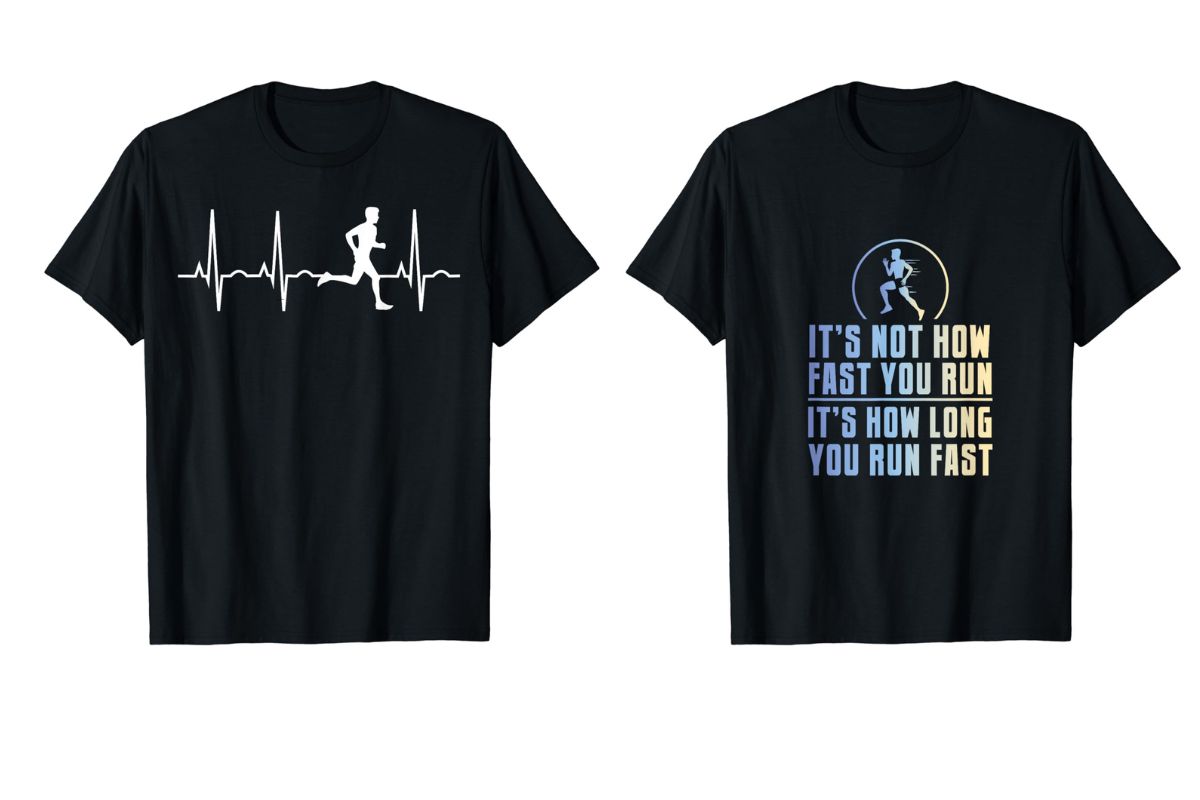
When creating a running shirt design, your focus should be on effective brand representation, choosing an engaging color palette, striking a balance between simplicity and intricate design elements, and utilizing cutting-edge design techniques.
Incorporating Logos and Brand Identity
Your running shirt is a canvas to showcase your brand’s identity. It is crucial to place your logo prominently but tastefully to ensure visibility without overshadowing the overall design. When positioning logos, remember to allow space for race numbers if necessary. Consider the following aspects:
- Positioning: Front, back, sleeves—decide where your logo will have the most impact.
- Size: Ensure your logo is visible from a distance but does not unbalance the shirt’s design.
Selecting the Perfect Color Scheme
A harmonious color scheme can set the tone for your running shirt. Colors influence emotions and can make your shirt stand out. Here’s how to select a color scheme:
- Brand Colors: Start with your brand’s colors as a base to maintain identity.
- Contrast: Use contrasting colors for text and design elements to enhance readability.
Balancing Simplicity and Creativity
While simplicity often equates to a more timeless design, don’t shy away from being creative. A good design strikes a balance and ensures that your message is clear. Use these principles to guide you:
- Clarity: A simple design helps your message stand out clearly.
- Creativity: Add creative touches without complicating the shirt’s appearance.
Exploring Artistic and 3D Designs
3D designs and artistic elements can add a unique dimension to your running shirt. With modern technology, you have the opportunity to incorporate these elements effectively. Keep these tips in mind:
- Artistic Flair: Work with talented designers to add unique artistic elements that tell a story or convey a message about your event or brand.
- 3D Elements: Experiment with subtle 3D effects that offer a tactile experience or visual depth, keeping in mind the technical feasibility and comfort of the runner.
Design Process and Customization Tools
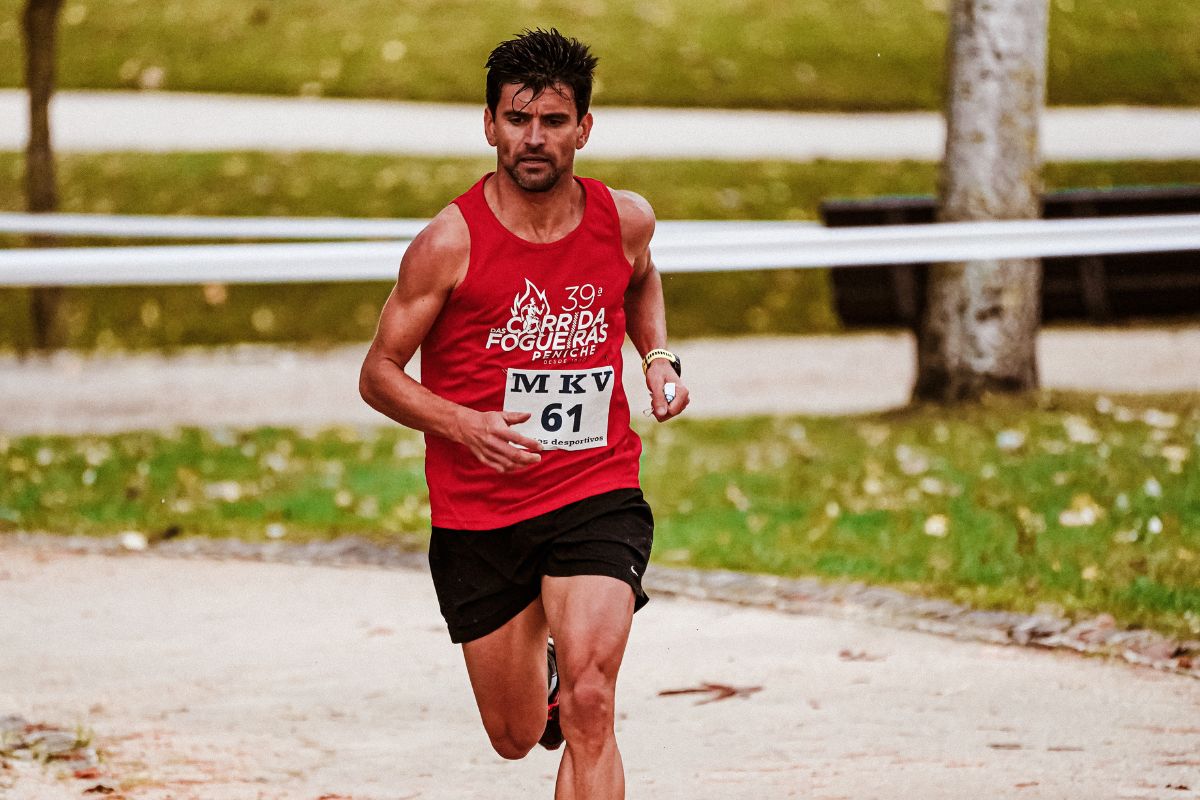
When creating custom running shirts, you have access to a variety of tools that can turn your vision into reality. These tools cater to both beginners and design-savvy individuals, ensuring you can personalize your apparel with ease.
Leveraging a Design Studio
You can utilize an online design studio to craft your custom running shirts. These studios typically provide a user-friendly interface where you can:
- Select from a range of t-shirt designs and styles, such as short sleeves, long sleeves, and tank tops.
- Choose your preferred colors and patterns to match your taste or team branding.
- Add text, with options for different fonts and sizing, to convey your message or represent your team’s name.
- Incorporate logos and artwork by uploading your own files or using a provided library of graphics.
These studios often include features such as 3D configurators that allow you to view your design from multiple angles, giving you a comprehensive understanding of the final product.
Utilizing Customization Apps
For on-the-go customization, there are mobile apps dedicated to custom product creation. Using these apps, you can:
- Quickly upload and position your artwork on the shirt.
- Access a vast collection of pre-existing designs and motifs that can be modified to fit your requirements.
- Make precise adjustments to your design directly from your smartphone or tablet, offering convenience if you’re away from your desktop.
Mobile apps for creating custom shirts bring the power of design studios to your fingertips, ensuring you can work on your designs whenever inspiration strikes. With Custom Ink and similar platforms, you have the freedom to experiment with your designs and immediately visualize the outcomes.
By employing these digital tools, the process of creating custom running shirts becomes a straightforward task that prioritizes your creativity and personalization preferences.
Printing Techniques for Running Shirts
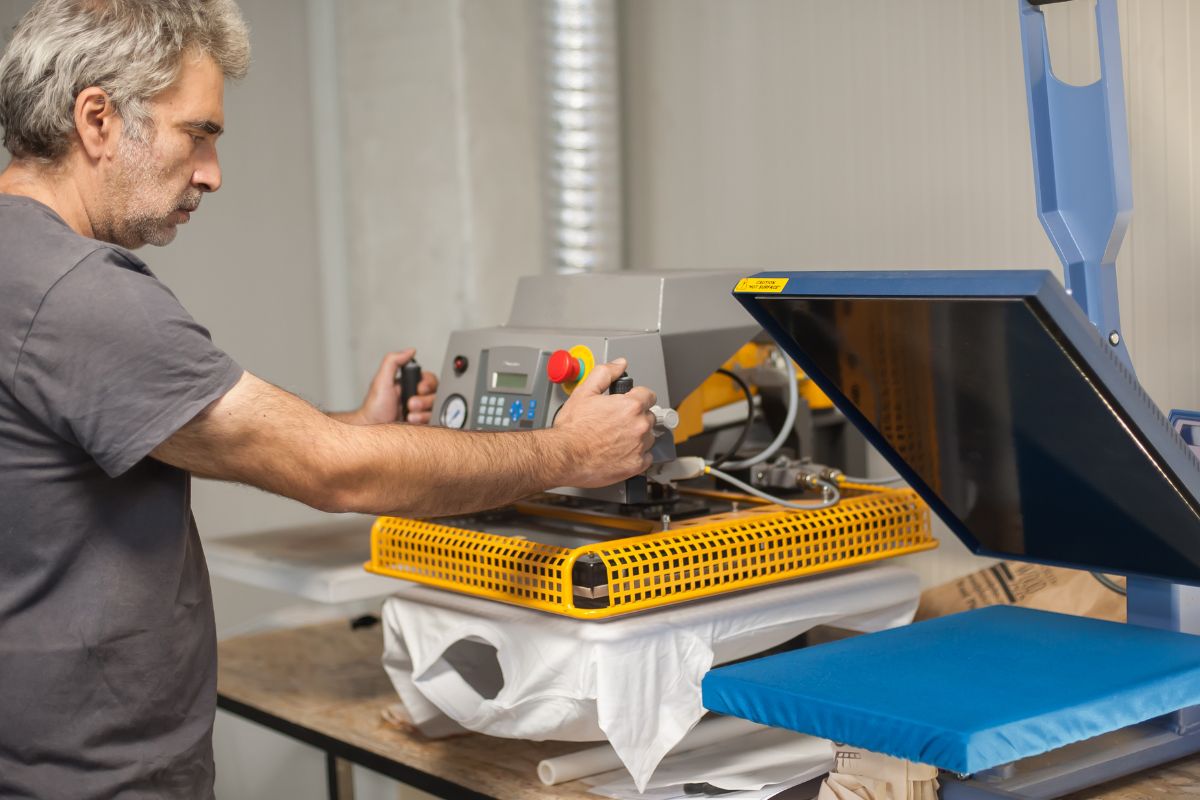
Choosing the right printing technique for your running shirts is crucial to ensure durability and comfort during your runs. The print design should maintain its quality through numerous washes and resist the rigors of your workout.
Screen Printing Essentials
Screen printing is a popular method for t-shirt printing, particularly for running t-shirts where durability is key. With this technique, ink is pushed through a mesh stencil onto the fabric. Here are some specific points you need to know:
- Durability: Screen printing offers thick layers of ink that are less likely to fade over time.
- Color Vibrancy: The inks used in screen printing are notable for their vivid colors and crisp edges.
- Order Size: It is most cost-effective for large orders, as the setup costs are distributed over a larger number of garments.
Advanced T-Shirt Printing Technologies
In addition to traditional screen printing, several advanced methods can be used to create custom running t-shirts:
- Digital Printing: Also known as direct-to-garment (DTG), this method sprays the ink directly onto the t-shirt, allowing for high detail and a wide range of colors.
- Heat Transfer: Designs are printed onto special paper and then transferred onto the t-shirt using heat and pressure.
- Sublimation Printing: Ideal for polyester t-shirts, this technique turns ink into gas to bond with the fabric, resulting in vibrant and long-lasting designs.
Each printing technique has its own set of benefits and is suitable for specific design needs and order sizes. Your choice will depend on the complexity of your print design, the fabric of your running t-shirts, and the quantity you need.
Marketing and Selling Your Shirts
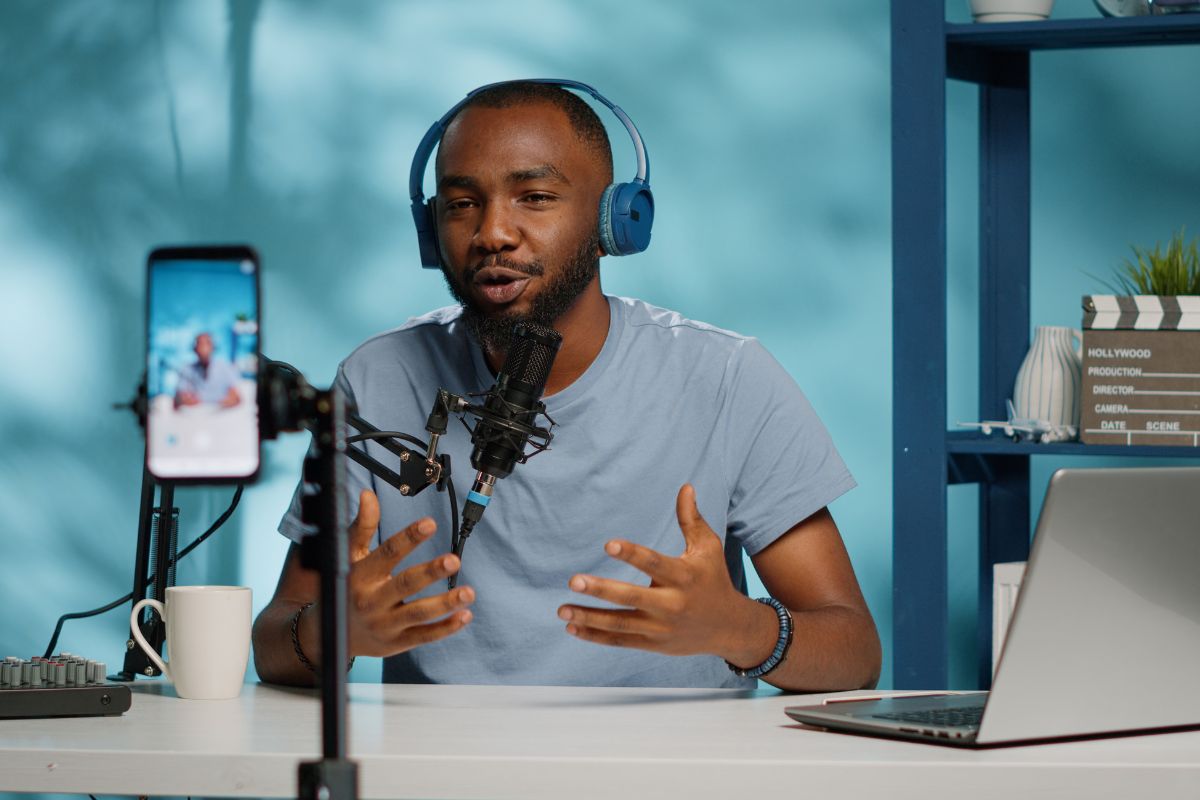
To successfully market and sell your running shirts, you need to leverage the power of online commerce, social media engagement, and strategic partnerships. This involves setting up a user-friendly online store, interacting with your community on social platforms, and collaborating with sponsors and clubs that align with your brand.
Setting Up an Online Store
Your online store is the central hub for your running shirt designs. Here’s how to optimize it:
- Domain Name: Choose a domain that represents your brand and is easy to remember.
- Shopping Cart: Integrate a secure, reliable shopping cart system.
- High-Quality Images: Upload clear, high-resolution images of your shirts from multiple angles.
- Detailed Descriptions: Provide thorough descriptions including fabric, fit, and care instructions.
- Club Logos: If offering club-specific designs, feature club logos prominently.
- Marathon Collections: Highlight marathon-themed shirts to attract runners looking for event-specific gear.
Engaging with Social Media and Community
Social media is your direct line to customers and running enthusiasts. Implement these strategies:
- Consistent Branding: Ensure your social media profiles match the branding on your online store.
- Regular Posts: Share content regularly to keep your audience engaged.
- Community Interaction: Join running groups and forums to discuss designs and gather feedback.
- Promotions: Run social media-exclusive promotions to encourage shares and purchases.
- Running T-Shirt Design: Showcase your design process and invite input from your followers.
Collaborating with Sponsors and Clubs
Partnerships can amplify your reach and add credibility to your brand:
- Local Running Clubs: Offer to create custom shirts with their logos, potentially on a consignment basis.
- Sponsors: Partner with local businesses or marathons for sponsored shirt designs.
- Cross-Promotions: Work with sponsors and clubs on social media and email campaigns for mutual benefit.
Targeting specific running-related events and tailoring your designs to these themes can set your brand apart and cater directly to your audience’s interests.
Customer Service and User Experience

In designing custom running shirts, your satisfaction hinges on exceptional customer service and a user experience that makes the process straightforward and hassle-free.
Developing a Support Team
Your support team is critical in guiding you through the design and purchase process. A well-trained team should respond promptly to your inquiries and provide accurate information about products. Seek out companies that invest in their customer service representatives to ensure you receive help when you need it most.
Gathering Feedback and Answering Questions
Listening to your users is a cornerstone of exemplary service. A streamlined system for gathering feedback allows companies to continuously improve their offerings. Additionally, a comprehensive FAQ section can preemptively address your questions, saving you time and giving you peace of mind.
Streamlining Contact and Registration
The ease of reaching out and registering on a company’s website can significantly impact your experience. Companies should provide a clear and simple “Contact Us” page, in addition to a registration process that is quick and user-friendly. This ensures that your journey from initial contact to final product is smooth and efficient.
Order Fulfillment and Logistics

When you order custom running shirts, understanding the fulfillment process and logistics is crucial. This ensures that your shirts arrive on time, with cost-effective options, and without compromise on quality.
Managing Delivery Times and Conditions
You need to account for delivery times, which can vary based on the supplier’s location and production capacity. For example, if your supplier offers products made in Germany, the delivery times may be different compared to other regions due to manufacturing and shipping logistics. Confirm the expected delivery window, which can range from a few days to several weeks. Working conditions, such as holidays or peak seasons, can also affect delivery times.
- Standard Delivery: Often the most cost-effective option, with a timeline of several weeks.
- Expedited Delivery: A faster option, usually at a higher cost.
Offering Various Pricing Options
Pricing structures typically vary whether you are ordering in bulk or purchasing individual shirts. Suppliers may offer all-included pricing models, which means that the cost of your custom shirts includes not only the garments but also printing, taxes, and sometimes shipping. Here’s a breakdown of common pricing strategies:
- Bulk Pricing: Discounts may apply when ordering larger quantities, making it more cost-effective.
- Single Item Pricing: Ideal for small orders, but usually more expensive per item.
Ensuring Top Quality in Any Quantity
Whether you order one shirt or a thousand, you should expect top quality. Quality control is a key aspect of the order fulfillment process. Here’s how you can ensure high-quality products:
- Material Inspection: Fabrics and printing materials should be checked for defects.
- Print Quality Assessment: Graphics and text need to be clear and correctly positioned.
- Final Review: Before shipping, a comprehensive check ensures the products meet your standards.
Quality isn’t dependent on quantity—suppliers should guarantee the same level of quality for every shirt they produce.
Product Personalization and Custom Orders

Taking your running gear to the next level with custom features enhances both the functional and aesthetic appeal of your apparel. By personalizing your running shirts, you create a unique item that reflects your running milestones or personal style.
Incorporating Runners’ Names and Race Details
When you opt to customize a running shirt, adding your name or the specifics of a race transforms the piece from a standard garment into a memento of your achievements. Whether it’s your first marathon or a local charity run, having your name emblazoned on the shirt, along with the race’s name and date, not only offers personal satisfaction but also boosts recognition amongst fellow runners.
- Your Name: Bold and legible, ensuring visibility.
- Race Name & Date: Accurate and complementary to the shirt’s design.
Adding Photographs and Unique Texts
To make your custom running shirt truly one-of-a-kind, consider integrating photographs or personal slogans. A high-quality, well-placed photograph can turn the shirt into a conversation starter, while a motivational quote or personal mantra in crisp, clear text can serve as both a personal motivator and an inspiration to others.
- Photographs: Ensure clarity and the right resolution to prevent blurring.
- Text: Choose font styles and sizes that are readable, even from a distance.
Remember, with custom running shirts, the design elements like runners’ names, races, texts, and photographs should all coalesce to create a coherent and visually pleasing piece that tells your story.
Pricing Strategy and Financial Considerations
| T-Shirt Type | Average Cost (USD) | Description |
|---|---|---|
| Basic Performance T-Shirt | $15 – $25 | Standard moisture-wicking fabric, suitable for casual runners. |
| Mid-range Running Shirt | $25 – $40 | Enhanced features like better moisture management, reflective elements, and ventilation panels. |
| Premium Running Shirt | $40 – $60 | High-performance fabric with advanced moisture-wicking properties, anti-chafing seams, and odor control technology. |
| Compression Shirt | $30 – $70 | Form-fitting shirts that provide muscle support and improve circulation, often with additional features like UV protection. |
| Branded/Designer Shirt | $50 – $100+ | Collaborations with high-end brands or designers, offering unique designs, premium materials, and exclusive features. |
When you enter the market with your running shirt designs, it’s vital to comprehend the pricing landscape and to determine at what price point your product fits. A sound pricing strategy meets your financial goals while also appealing to your target customers.
Understanding Standard Prices and Premium Options
Standard prices are generally set based on a combination of your production costs, market standards, and competition. Here’s a simple framework to follow:
- Calculate your production cost: This includes materials, labor, and any other direct costs.
- Estimate your overhead costs: These are the indirect costs like utilities, rent, and marketing.
- Determine your desired profit margin: A standard keystone markup is 100%, which means you double the cost.
For premium options, consider:
- Unique selling points (USPs): Are your designs exceptionally unique or use cutting-edge technology?
- Material quality: Higher-end materials can justify a price increase.
- Brand positioning: Align your pricing with your brand’s perceived value in the market.
Consider offering multiple price tiers to cater to different segments of the running community.
Balancing Costs and Quality for Various Audiences
When setting prices for your running shirts, you must balance costs and the quality your audience expects.
For casual runners:
- Lower-priced options might be more appealing.
- Consider materials and designs that are cost-effective without compromising on basic quality.
For serious athletes:
- The willingness to pay more for advanced features is higher.
- Focus on technical fabrics and innovative features that support performance.
Remember, the goal is to provide value to your customers at a price that reflects the quality and uniqueness of your product.
Frequently Asked Questions
When designing a running shirt, it is crucial to consider the latest trends, proper fit, materials, personalization, functionality, and color schemes to ensure performance, comfort, and style.
What are the latest trends in running shirt designs?
The contemporary trend for running shirts leans toward vibrant colors, reflective elements for safety, and motivational quotes or bold graphics that make a statement while ensuring visibility.
How should a running shirt fit for optimal performance?
Your running shirt should offer a snug, yet comfortable fit that allows full range of motion without any excess fabric that can cause chafing or drag, especially important for competitive running.
What materials are best for breathable and comfortable running shirts?
Opt for moisture-wicking materials such as polyester blends, merino wool, or technical fabrics that draw sweat away from your skin to keep you dry and help prevent overheating.
How can I personalize a running shirt for a team or event?
You can personalize running shirts with logos, custom graphics, and text using sublimation printing, screen printing, or vinyl heat transfer to showcase team spirit or commemorate an event.
What features should I look for in designing a functional and stylish running singlet?
Key features include moisture-wicking fabric, flat-seam construction to minimize irritation, a lightweight feel, and a fit that complements the runner’s form while maintaining ease of movement.
Are there specific color considerations to keep in mind when designing a fun run event shirt?
For fun run event shirts, select high-visibility colors like neon hues for safety, and consider color psychology – for instance, energetic colors like orange or yellow can boost excitement and enthusiasm among participants.

